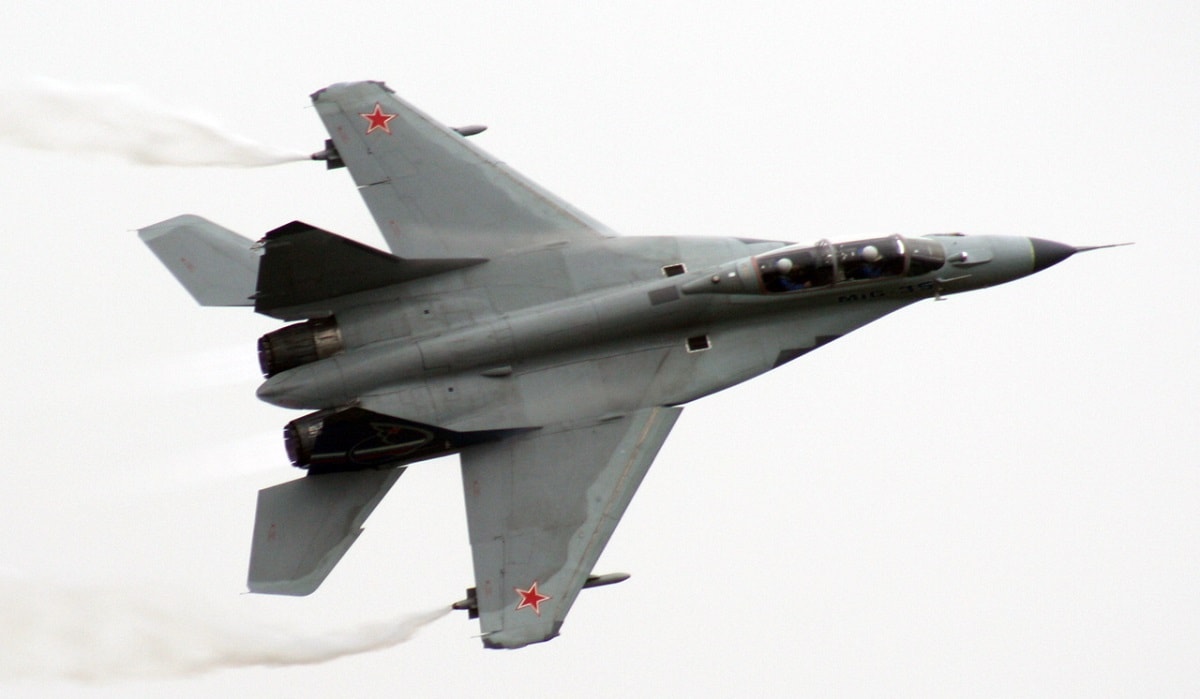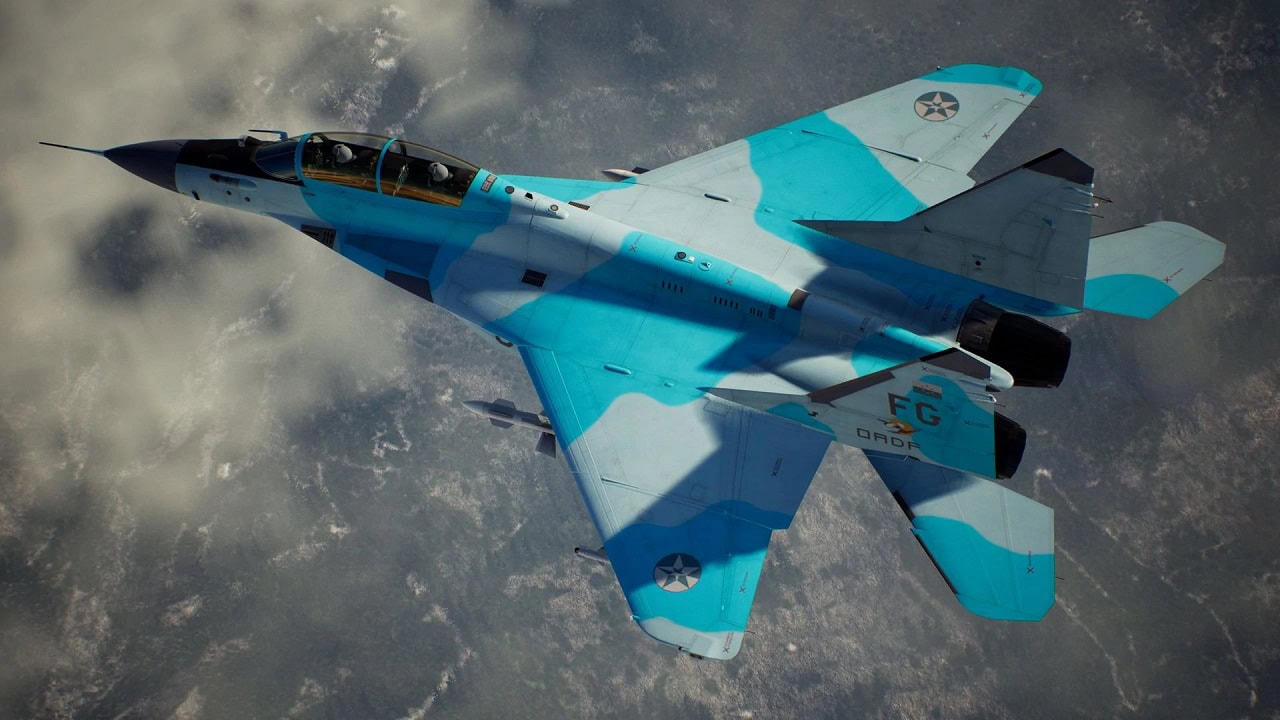Russia’s MiG-35, at least on paper, should be in the discussion of the top non-stealth fighters flying today. However, as happens many times when it comes to Russian procurement of new weapons platforms, things don’t always go to plan. Here is how one expert explained the challenges: The Mikoyan MiG-35 is one of Russia’s newest multirole fighters. Known to NATO as “Fulcrum,” the MiG-35 is considered a fourth-generation ++ fighter – meaning more advanced than a fourth-generation fighter, but not quite a fifth-generation fighter. The jet was introduced in 2019 and to date, only 30 are in service with the Russian Air Force.
The Plus-Plus Generation
The MiG-35 is an advanced version of the preceding MiG-29 K and M variants. Designed with the export market in mind, the MiG-35 features various updates. Perhaps the most significant update is the new information-sighting system – a fifth-generation-like feature that gives the MiG-35 increased brainpower and increased connectivity with other Russian weapons platforms.
Using updated avionics, the MiG-35 is configured to perform a wide variety of missions – everything from air superiority to precision ground strikes to reconnaissance. New to the MiG-35 is the PESA radar (passive electronically scanned array), an advanced radar system. The MiG-35 also has an OLS-UEM, which aids in the detection of targets in the infrared spectrum. The OLS-UEM can detect land, air, or sea targets and can even detect airborne targets from 55 kilometers away.
Included with the new MiG is the OLS-K/OLS-KE podded electro-optical targeting system. The OLS-K can be used to find and track ground or sea-based targets. Using an infrared sensor and a TV camera, the OLS-K can detect ground targets at a range of 20 kilometers, and sea targets at a range of 40 kilometers. And topping things off, when needed, an MSP-418KE active jammer pod, which helps deceive enemy SAMs, can be attached to any of the MiGs hardpoints.
For power, the MiG-35 relies on two FADEC RD-33MK turbofan engines. The new RD-33MK is an upgraded version of the original RD-33 engine. The upgraded model offers 7 percent more power, with a higher thrust (9,000 kgf). Adapted to the modern battlespace, the RD-33MK was designed to reduce infrared and optical visibility. Initially, the engine was to feature a thrust vectoring nozzle. However, the idea was scrapped for cost concerns. With the new engines, the MiG-35 has a max speed of Mach 2.25, a 52,000-foot service ceiling, and a 65,000 feet per minute rate of climb. The airframe can handle 9 positive Gs, or negative 3 Gs.

Russia Hopes Export to Foreign Allies
Russia designed the MiG-35, in part, for the export market. Already, potential suitors have entered discussions to purchase the updated MiG. Egypt, for example, was expected to place a large order for 24 MiG-35s. Instead, Egypt opted into a $2 billion contract for 46 MiG-29M fighters. India was considering the MiG-35, too. The jet lost an Indian procurement bid in 2011 when the MiG-35 had problems with its avionics (plus insufficient thrust). Now, however, the Indian Air Force is reconsidering the MiG-35, in the MMRCA 2.0 procurement contest for 114 multi-role fighters. Argentina, Bangladesh, and Malaysia have all been linked to the MiG-35, as well.
Updates to the MiG-35 are already being developed and tested. Apparently, a naval version of the MiG-35 is under development – although, Russia’s lone aircraft carrier may never sail again. And Yuri Slyusar, President of Russia’s United Aircraft Corporation, said in a conference call with Russian President Vladimir Putin that the MiG-35 could be outfitted with a laser weapon in the future.
Harrison Kass is the Senior Defense Editor at 19FortyFive. An attorney, pilot, guitarist, and minor pro hockey player, he joined the US Air Force as a Pilot Trainee but was medically discharged. Harrison has degrees from Lake Forest College, the University of Oregon, and New York University. He lives in Oregon and listens to Dokken.

